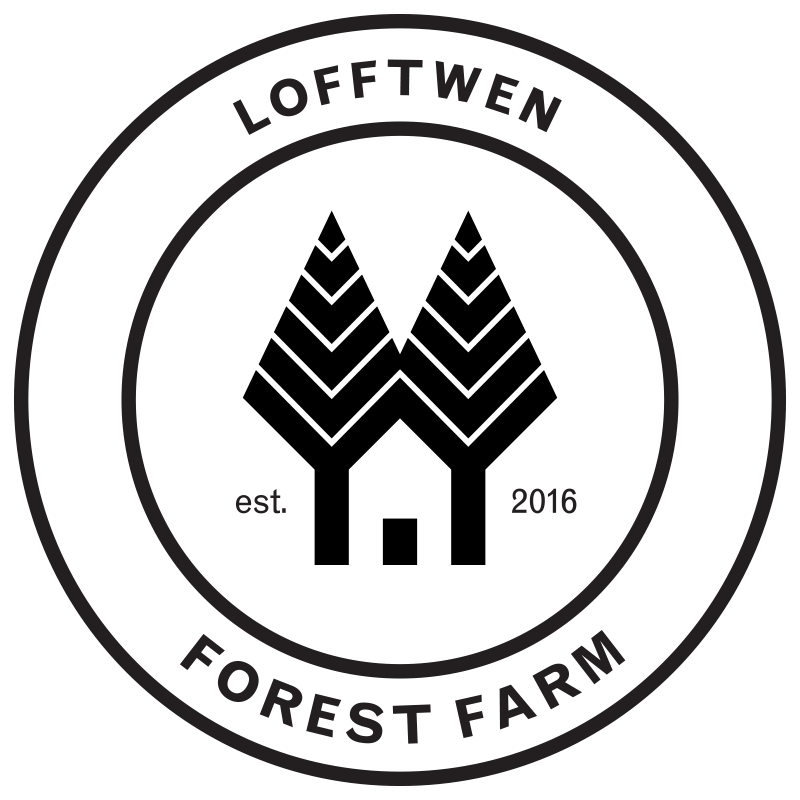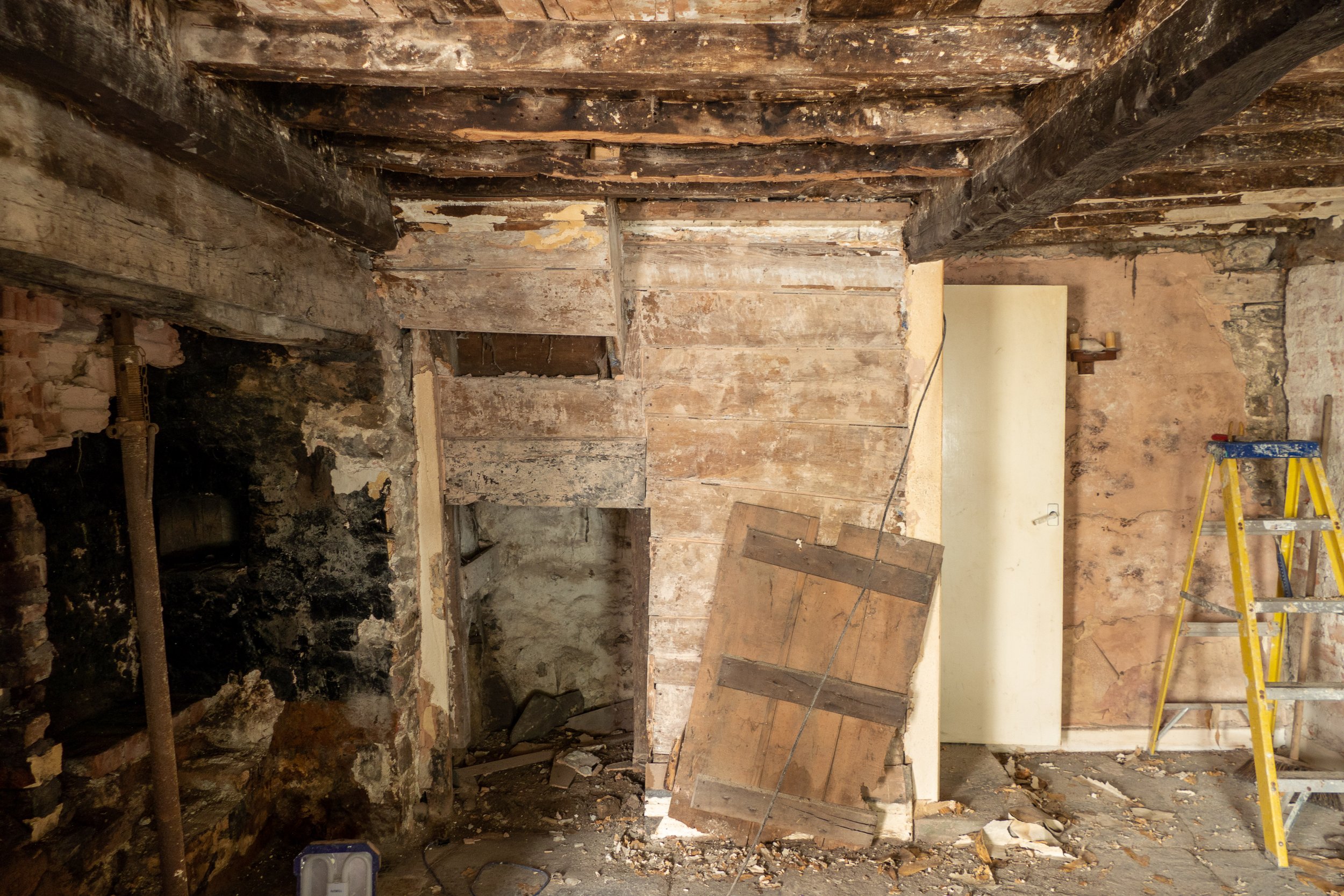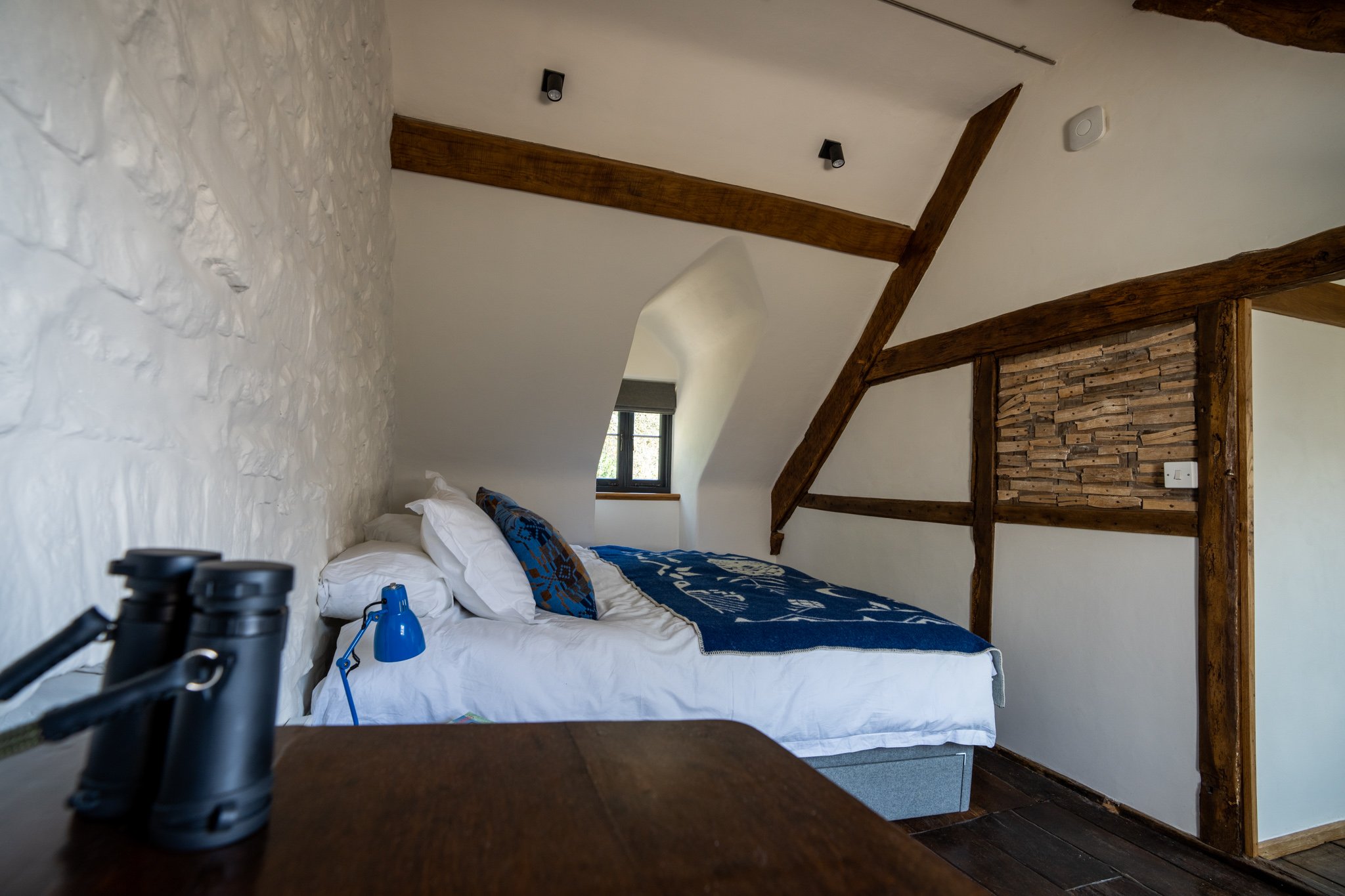Restoring Lofftwen’s ancient Welsh Longhouse
Between us as a family we have plenty of experience in the world of property. We know that the greatest asset in any renovation project is often patience, with a little more sprinkling of patience added for good measure. This is probably even more so the case for restoring ancient buildings, but even we couldn’t have foreseen the multiple twists and turns there would be along the bumpy road to restoring Lofftwen’s historic Welsh Longhouse. But for every moment of frustration there were many more moments of joy and excitement as the building, which retains its original medieval footprint but was substantially upgraded in the 17th century, began to reveal just how many of its secrets remained as the multiple layers of carpet and plasterboard were carefully peeled away.
Among the most treasured of these finds included the original inglenook fireplace, whose large oak bressummer beam is adorned by a series of apotropaic witch marks added to bring good fortune to what would have been the most important but also potentially dangerous part of the house. Complementing this find in the medieval hall was the original bread oven and flagstone floor, together with a remaining section of wall painting which has been dated to circa 1750s. This area was probably once carved off as a bedroom, with the occupants unable to afford wallpaper, which bore the additional cost burden of a wallpaper tax at the time.
Moving upstairs revealed more exciting finds with many of the original oak floorboards still in remarkably good condition considering parts of the building had been left to the mercy of the elements for several years. We also found original oak panelling and sections of lath and plaster with hand-forged rose headed nails, which have been left on display dividing bedrooms 2 and 3.
Of course, there were elements of the building that could not be saved, including much of the original roof structure, where we had to replace two A-frames and a number of purlins and all the rafters. But where we have made additions or alterations, primarily designed with bringing more natural light into the building and environmental performance, they have been done so while remaining faithful to the spirit of the building, using traditional skills and natural materials across all elements. These include replacement dormer windows, sumptuously curved internal lime plastering, and a bespoke hand built oak staircase.
As we moved onto looking at the outside, we wanted to create covered outdoor space for people to enjoy sitting outside even if it might not be the perfect outdoor weather. The existing Dutch barn seemed ideal, partly because of its proximity to the Longhouse and waterside stream location but also because it had great character of its own. It had originally been built from defunct cast iron railway tracks and you can just see the remnants of the year 1840 something (can’t quite read the final number) on one of the uprights. The structure had initially been condemned as unsafe, but it had the kind of character you simply can’t buy, so we persevered, and with some re-engineering and a new roof it was saved. It is now one of my favourite places to sit on the farm, whether soaking up the heat of the sun or the campfire, accompanied by bird song during the day or the hooting of owls at night, and the ever present sound of the babbling brook just beyond.
It’s been an incredible journey over six years getting the Lofftwen Longhouse ready for visitors. We’ve been helped along the way by a fantastic, dedicated, and highly skilled team of professionals and craftspeople. We had no idea what we would find when starting work on the Longhouse, but even before works began and the place was in a bit of a state, it still had a really good energy, testament perhaps to the people who came before us.
If you are interested in staying at Lofftwen Longhouse and exploring the hundreds of miles of rarely travelled footpaths and bridleways in the Cambrian Mountains, known as the Last Wilderness of Wales, you can book directly through www.lofftwen.com or through Canopy & Stars at https://bit.ly/TheLonghouse.
















